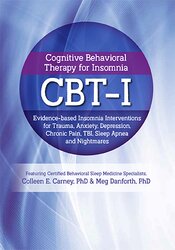The smart Trick of Training in Cognitive Behavioral Therapy of Insomnia (CBT-I) That Nobody is Discussing


How Cognitive Behavioral Therapy 'Cured' One Woman's Insomnia - Shape
How Cognitive Behavioral Therapy for Insomnia (CBTi) - NorthStar can Save You Time, Stress, and Money.
Sleep Limitation and Compression Individuals with insomnia typically spend excessive time lying in bed awake. Sleep limitation restricts time invested in bed in order to restore a consistent sleep schedule. This Website is meant to increase the drive to sleep and can momentarily increase daytime fatigue. It is not advised for people with specific medical conditions that can be made even worse by losing sleep, such as bipolar illness and seizures.

Time in bed is then adapted to show this amount, plus thirty minutes. For instance, if a person is attempting to sleep 8 hours a night but just getting 5 hours, they begin by adjusting their bedtime to invest 5 hours and thirty minutes in bed. When an individual spends most of their time in bed sleeping, they can start slowly increasing their time in bed.

Treatment Instruments of the cognitive behavioral therapy for insomnia - Download Table
Instead of immediately lowering time in bed to the amount of sleep they get on a common night, time in bed is slowly decreased till it is fairly near the time they invest in fact sleeping. Relaxation Training Relaxation techniques can help in reducing the racing ideas and tension that often accompany depending on bed awake.
Cognitive Behavioral Interventions for Insomnia in Older Adults Fundamentals Explained
The very best relaxation strategies are those that can be fairly included into an individual's regimen. Here are a couple of relaxation strategies commonly taught in CBT-I:: Many various breathing exercises might be taught in CBT-I. These exercises normally involve taking sluggish, deep breaths. Research has demonstrated that focused breathing can increase sluggish heart rate and breathing, and lower feelings of stress and anxiety, anger, and depression.
These strategies may be combined with breathing workouts or guided imagery.: This method changes focus to different parts of the body and notifications specific experiences. An individual might focus on sensations such as heaviness, heat, or relaxation.: Biofeedback utilizes technology to assist monitor particular procedures in the body such as brain waves, heart rate, breathing, and body temperature.
: Guided- or self-hypnosis for insomnia involves discovering to unwind when provided a verbal or non-verbal cue.: Knowing to concentrate through meditation has shown a range of health advantages, including lowered stress, stress and anxiety, and increased relaxation. Meditation may also involve practices that combine concentrated attention with movement, such as yoga and tai chi.
